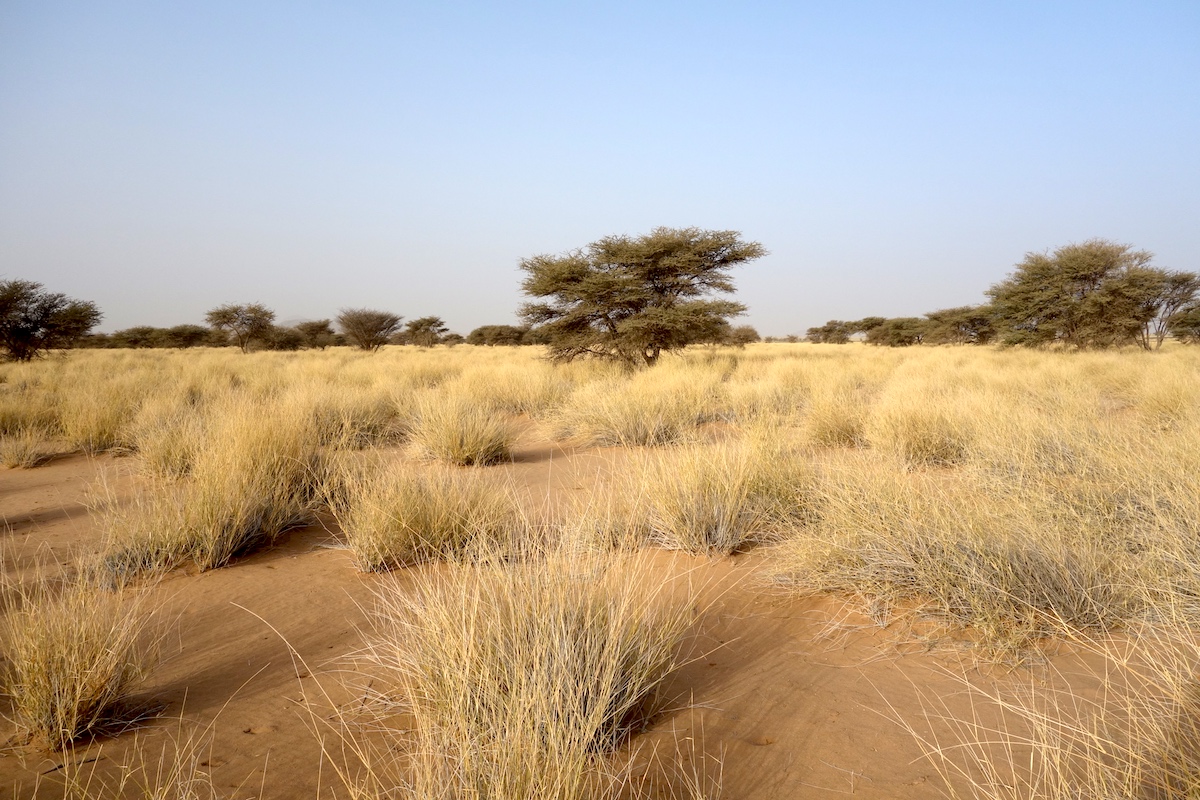The iPhone alarms went off at 6am and we were soon up and on the road back to Oued Jenna full of enthusiasm after the success of our previous evening’s spotlighting. Unfortunately the wind had got up overnight and conditions were not optimal for listening for nightjars and by the time it got light we had not heard or seen anything. To make matters worse we met the Dutch guys who had camped overnight in the wadi. They not only thanked us for the African Desert Warbler gen, they had scored within five minutes of reaching the coordinates, but also told us they had heard and seen Golden Nightjar the previous evening!
We had arranged for a late breakfast back at the house so that we could explore Oued Jenna in the cool of the morning. It is perhaps worth emphasising that the wadi is substantial and extends in a narrow ribbon several km either side of the road with a similar mixture of large acacias and long grass and that the Sudan Golden Sparrows hang out in nomadic mixed flocks with Desert Sparrows. Nico and Sidi drove us about 2 km into the Northern arm so that we could bird our way back to the road. As soon as we got out the car we found the Dutch team engrossed in trees that were leaping with Sylvia and Western Olivaceous Warblers. I will add a quick caveat here – the Iduna warblers we saw here mostly appeared to be identical with a similar call to the Western Ollies we had seen at Mijk farm and Tachektent the previous day. However both Graham and I independently noted at least one bird tail dipping in a manner usually associated with Eastern Olivaceous Warbler and we later learnt that Saharan Eastern Olivaceous (ssp reiseri), a form that we saw five years ago near Rissani, breed in Oued Jenna.
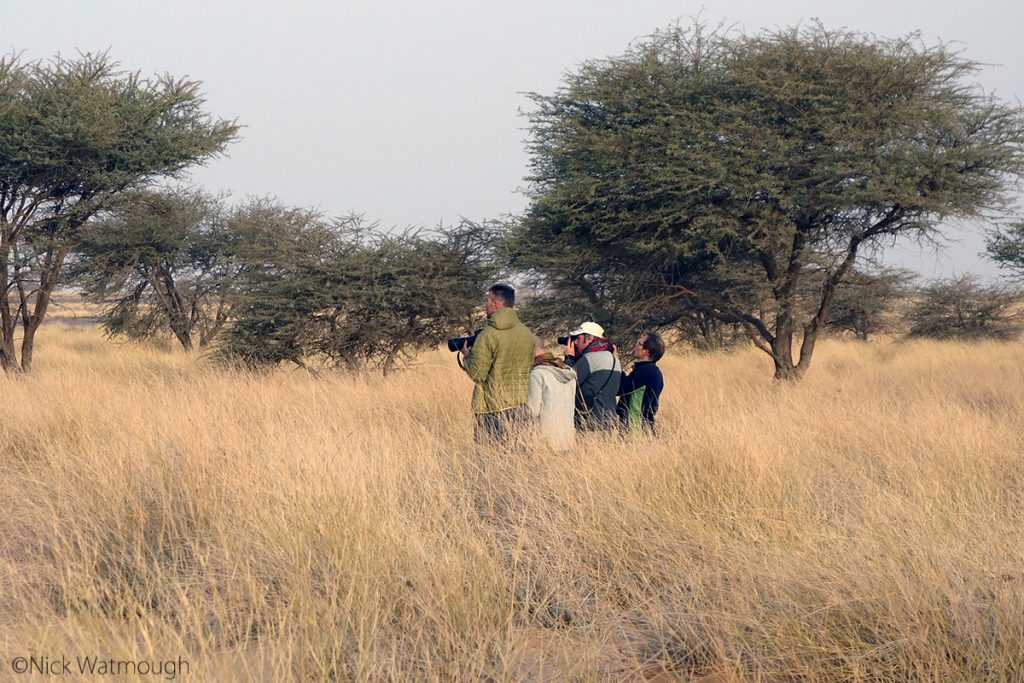
The dominant species of Sylvia was Western Subalpine Warbler with several Western Orphean (WP#695) with the odd Sardinan Warbler and Common Whitethroat thrown in for good measure.
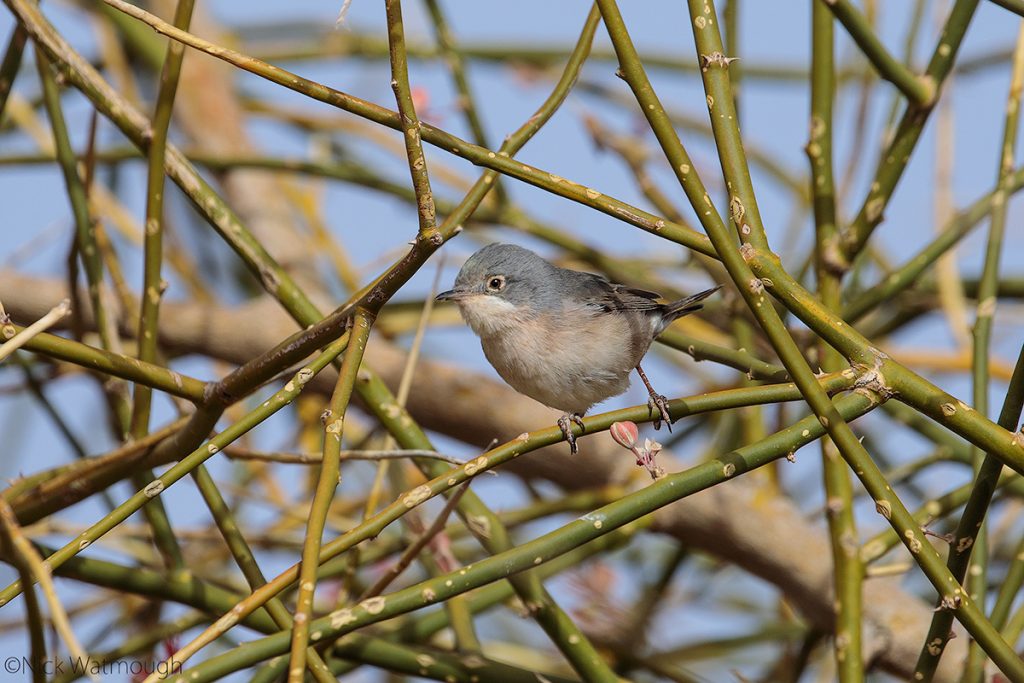
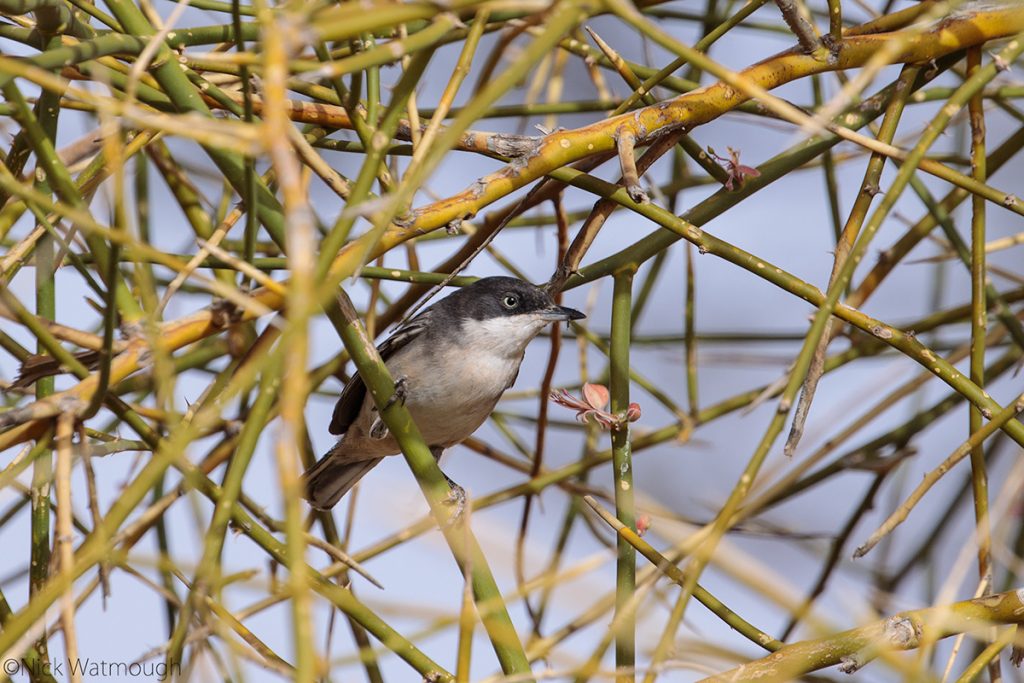
Having spent some quality time with the Sylvias we started making our way through the wadi picking up more Cricket Longtails, Fulvous Babblers and Black-crowned Sparrow Larks. After about 0.5 km we found three of the Dutch guys again who had flushed an owl that they thought might have been Long-eared. When it flew again it appeared too bulky with languid wing beats. On the small screen on the back of my camera the long range shots I took revealed the bulk, but no plumage details. However, when it flew once more the underparts and underwing confirmed its identity as Pharaoh Eagle Owl.
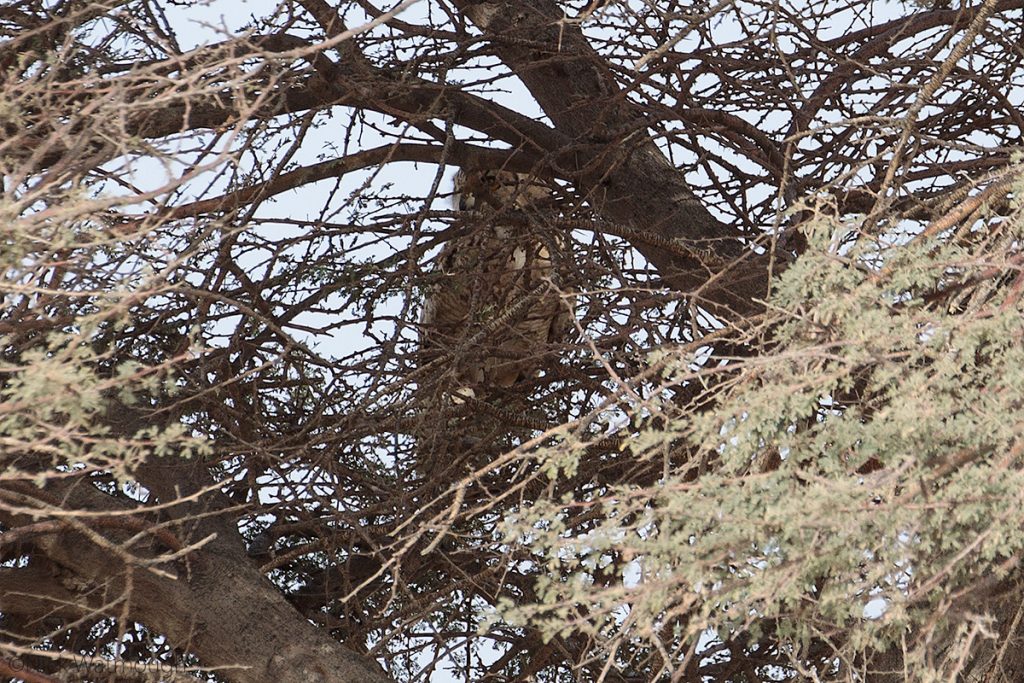
A little further down the wadi I finally got close to a Great Grey Shrike that was not perched on top of an acacia in direct sunlight, other wise it was more of the same in the final half kilometre.

We headed back to Assouerd stopping a couple of time to search patches of acacia where Nico had previously seen flock of sparrows, but only managed to find a single male Desert Sparrow
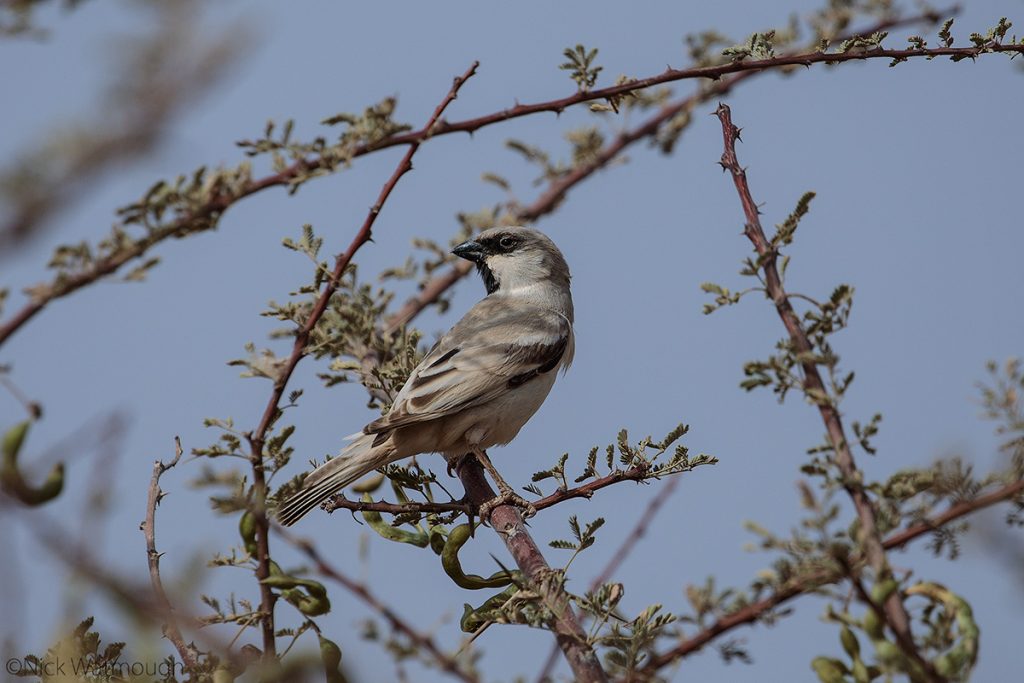
A little further down the road we stopped to admire a Spiny-tailed Lizard (Uromastyx sp). Based on distribution I understand is likely to be one of he dark forms of Uromastyx dispar flavifaciata that has been previously reported near Assouerd.
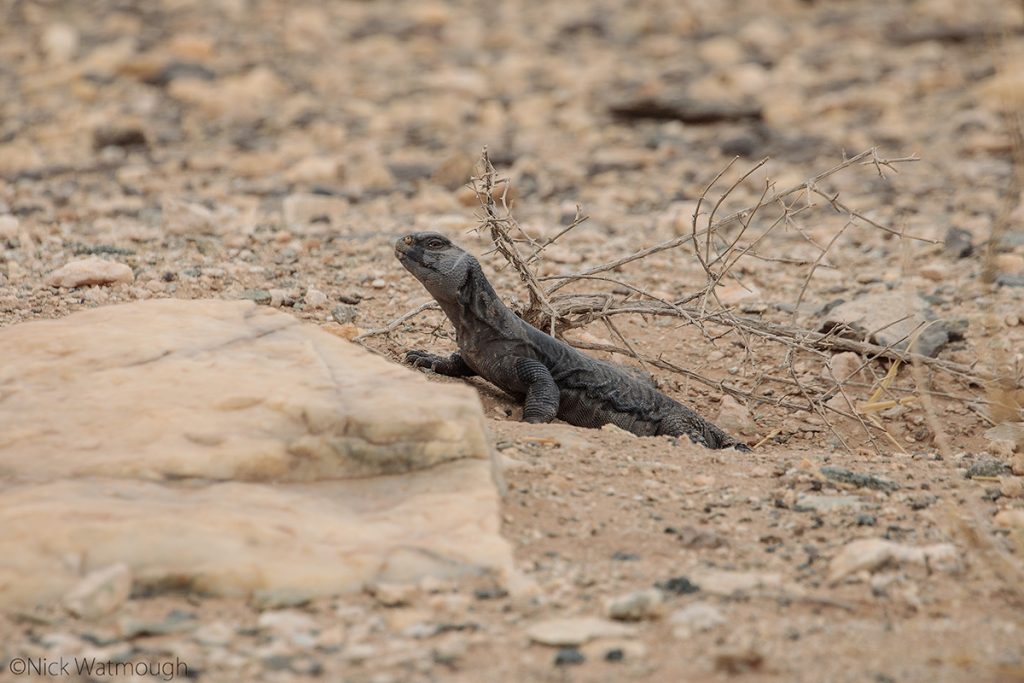
As we got close to town we stopped, very briefly, to look at a gang of Brown-necked Ravens feed in on a goat carcass and a pair of Lanners flew over, but given that our proximity to the military camp it was time to put the cameras away! The Dutch who had also been watching the falcons were also heading into town to try and secure better images of a Seebohm’s Wheatear they had seen the previous day feeding on a pile of garbage outside the town shop. Sadly it had moved on so we said our farewells and headed for brunch.
After a well earned rest during the heat of the day we ventured out again in the late afternoon and walked the Northern arm of Oued Jenna again and saw nothing new until we were almost back at the road when Graham came across a small mixed flock of Black-crowned Sparrow Larks and Desert Sparrows and that was it. Hot, tired and more than a little frustrated we asked Nico and Sidi to take us a couple of km into the Southern arm so that we could try our luck there. There was at least a bit more activity with small numbers of Bee-eaters and a male Marsh Harrier moving though the wadi.
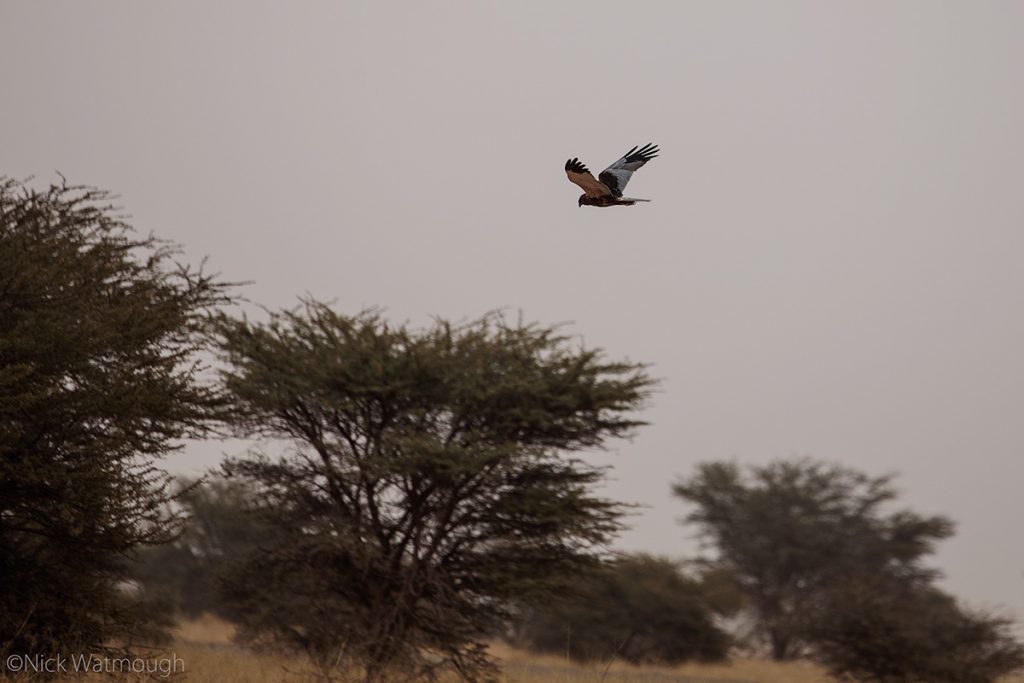
Apart from getting some nice looks at Cricket Longtail and Fulvous Babbler we had little to show for our efforts and we still had a couple of hours to go until it got dark. That said the full moon was rising and there was no wind so despite rising levels of frustration and incipient grumpiness we tried to remain positive.
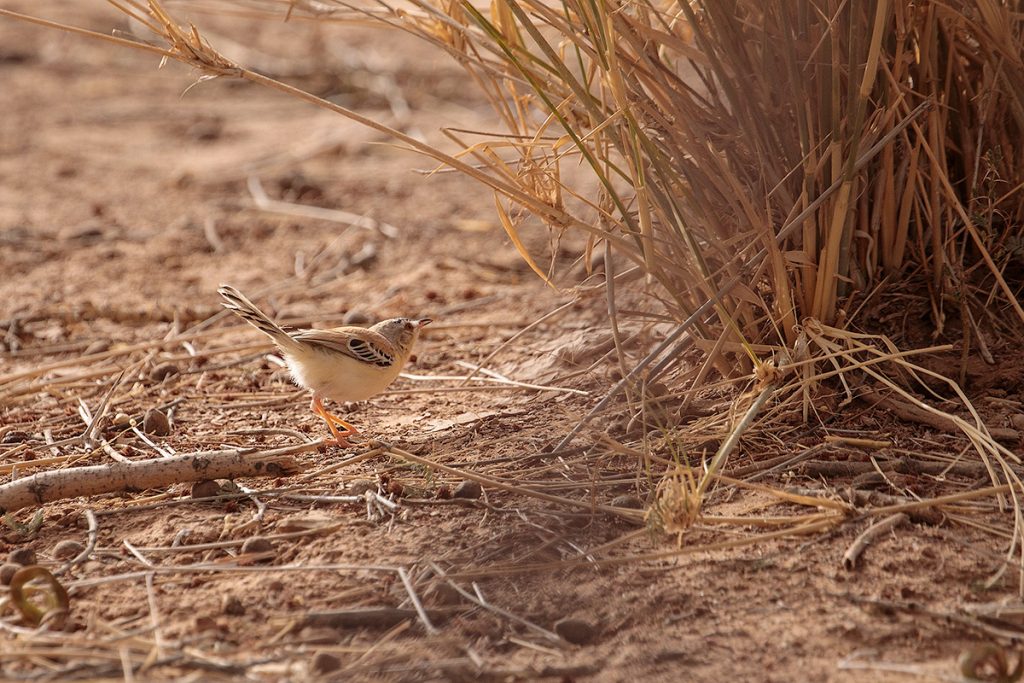
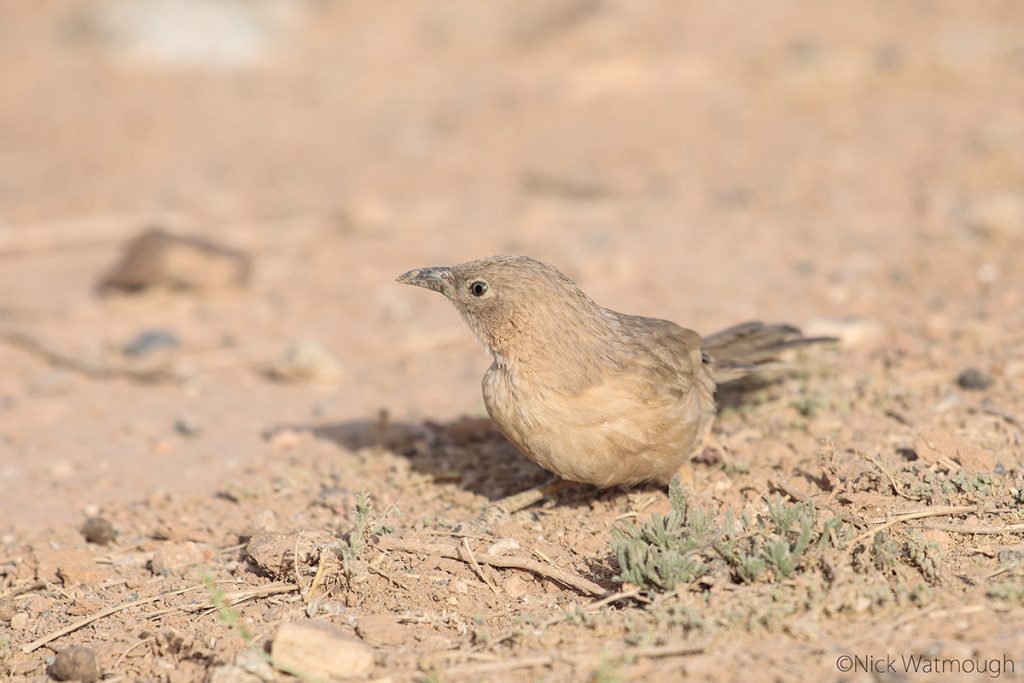
As the light started to go a Melodious Warbler showed around the car park but a last walk around the lower part of the wadi didn’t produce anything else new.
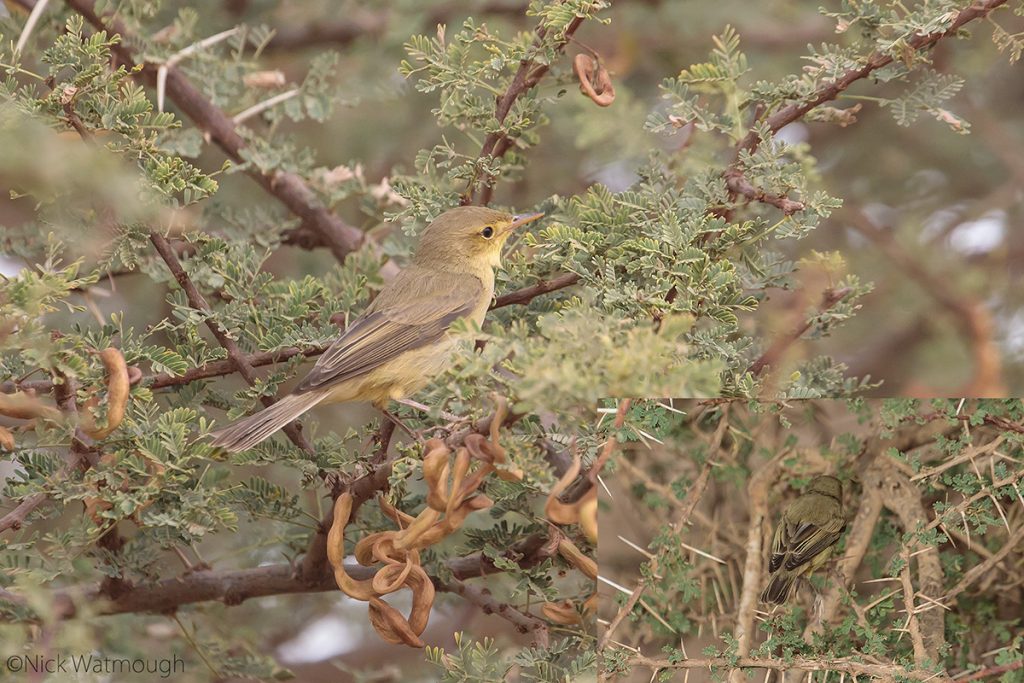
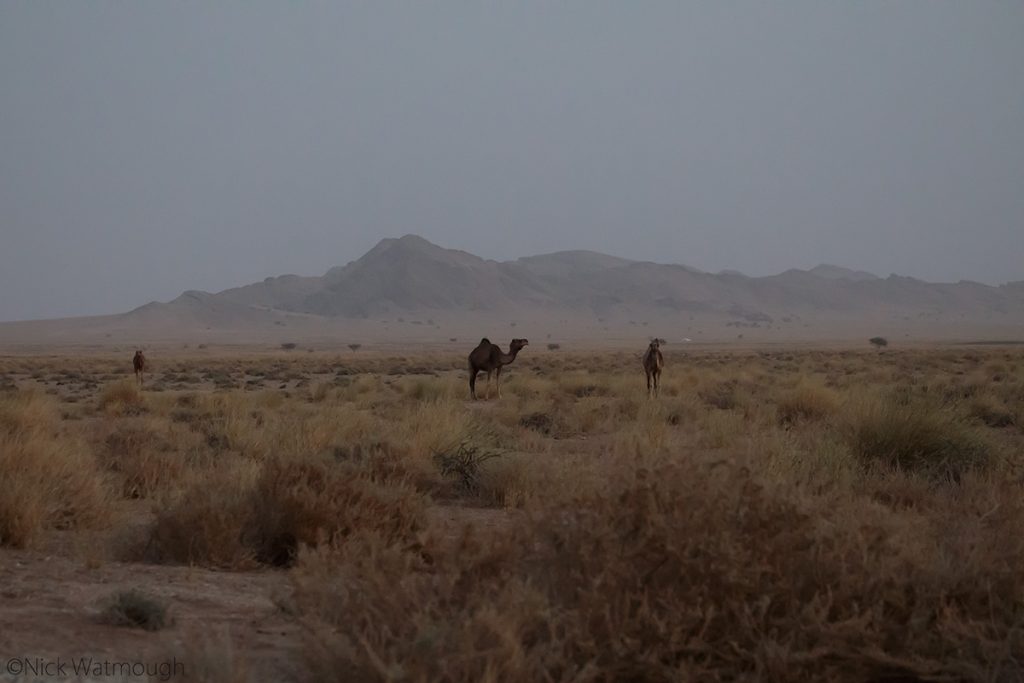
We positioned ourselves on the South side of the road where the Wise Birding tour had seen nightjars a few days before but to our surprise the singing came from the North side of the road. This was problematic as the south side (see the image above the title) is relatively open and grassy whereas to the North one has to pass, noisily, through a belt of acacias to get to the open areas. This we did with the inevitable consequence of disturbing the bird and not seeing it. Back at the road we briefly heard another bird on the South side before they shut up for the evening and we returned to the house disappointed but philosophical and more than ready for the superb tagine that awaited us – after all there was always the morning….

